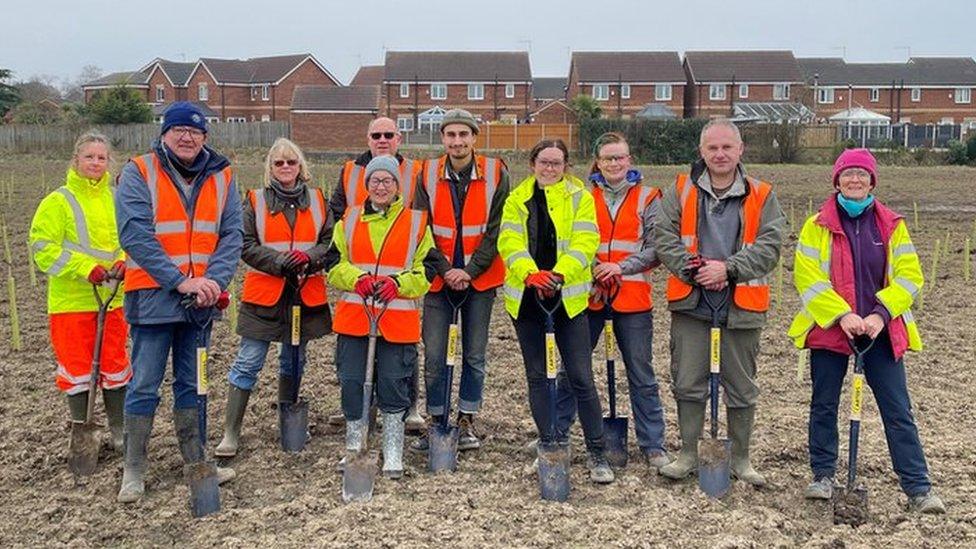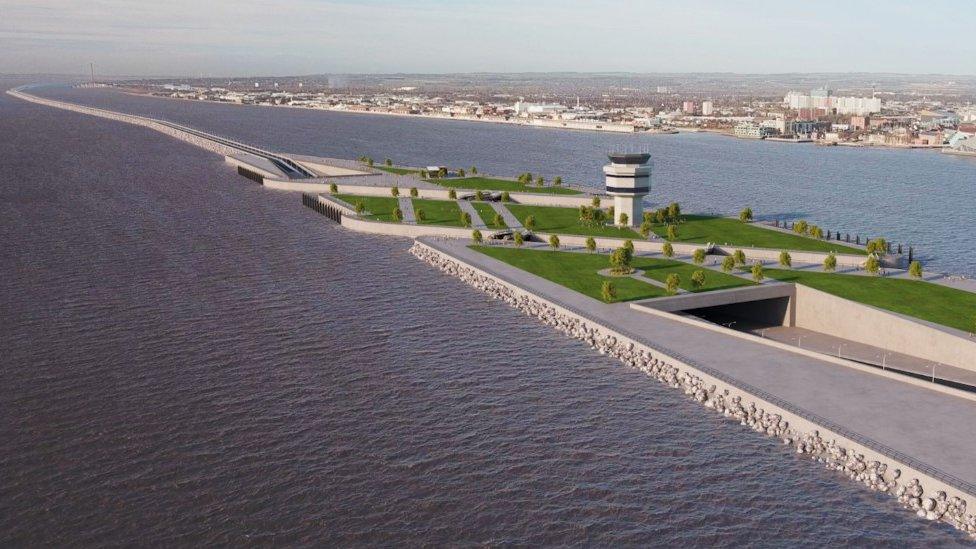New wood planted in Hull to protect homes from flooding
- Published

Volunteers are planting trees in Hull to help flood defence work
Volunteers are helping to plant thousands of trees as part of flood defence work in Hull.
The 17 acres of woodland and more than 3 miles (5km) of hedgerow will help store water and protect properties in the east of the city.
The "aquagreen" project will reduce the risk of flooding to more than 800 properties in North Carr and Sutton, the Environment Agency (EA) said.
It will also provide a habitat for wildlife, it added.
The EA said volunteers, including residents and community groups, had begun work this week, planting hundreds of trees over three days.
One of its flood risk advisors, Andrew Barron said there had been a "great response" from the community.
"We will be doing more planting this month as part of our ambitions to create new woodland habitat as part of our flood defence work to better protect homes from the risk of flooding."
The woodland will reach maturity in 15 to 20 years.
The land around it is to be converted into grassland and scrubland which it is hoped will provide a habitat for species such as skylarks, barn owls and butterflies.
The aquagreen is the second phase of £28.5m work, which began last year, to reduce the threat of flooding in the area.
Homes in North Carr and Sutton are currently at risk of flooding during heavy rain, which can overwhelm the manmade Holderness and Sutton Cross drains.
The EA said the area "narrowly avoided disaster" in November 2019 when other parts of Hull were hit by flooding.

Follow BBC East Yorkshire and Lincolnshire on Facebook, external, Twitter, external, and Instagram, external. Send your story ideas to yorkslincs.news@bbc.co.uk, external.
Related topics
- Published3 March 2022

- Published10 June 2022
